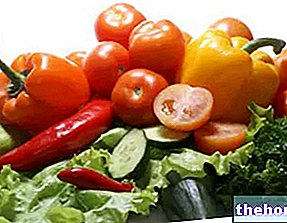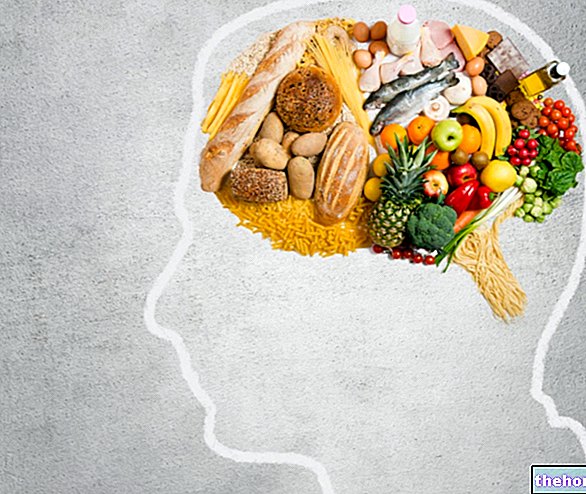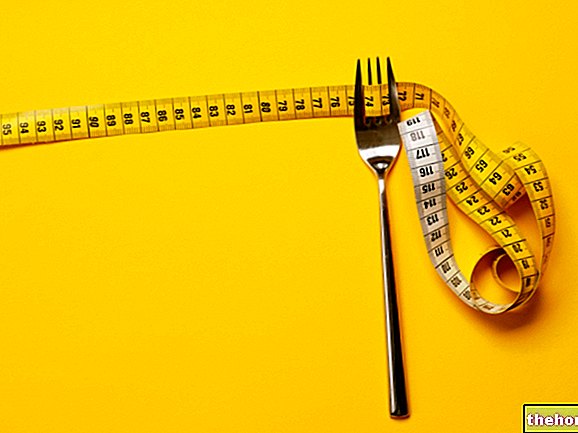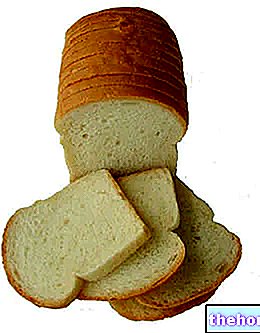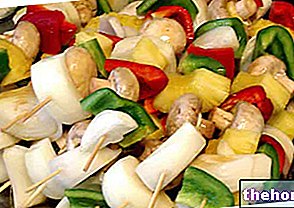Watch the video
- Watch the video on youtube
Snacks have never been as fashionable as they have lately. Everyone recommends them a little, from doctors to dieticians, from newspapers to trade magazines.
But are they really that useful?
Those who regularly follow our articles will already have the answer in mind: "It depends".
The function of snacks is to regulate food intake.
All of us will have happened to find ourselves in the grip of insatiable hunger after a long period of fasting. In such conditions we tend to take a much higher quantity of food than necessary since it takes at least 20 minutes for the brain to receive the first signals of satiety.
The attack of hunger inevitably arises if too many hours are allowed to pass between one meal to another. In these cases, the only way to defend yourself is to have snacks throughout the day. Being able to control your appetite means keeping food temptations in check.
A snack should first of all have the following characteristics:
be justified and planned
be balanced and calorically controlled
A snack is justified if there is a real need. Observing the following table it can be seen that on average it takes three to four hours for a complete meal to be digested.

Food digestion times
Minutes
Foods
Up to 30 "
Glucose, fructose, honey, alcohol, isotonic electrolyte drinks
30' ‑ 60'
Tea, coffee, low-fat milk, lemonade
60' ‑ 120'
Milk, low-fat cheese, white bread, cooked fish, mashed potatoes
120' ‑ 180'
Lean meat, cooked pasta, omelettes
180' ‑ 240'
Cheese, green salad, ham, grilled fillet
240' ‑ 300'
Grilled steak, pies, roasts, lentils
360'
Tuna in oil, cucumbers, fried food, mushrooms
480'
Sauerkraut, sardine cabbage in oil
(from Pitzalis G., Lucibello M., Food: instructions for use, Milan, Franco Angeli, 2002
Therefore it is a good rule to eat a snack when at least 2 hours pass from the previous meal and at least 2 hours from the next. Obviously this period of time will depend on what and how much you ate previously. If after a wedding lunch we can allow 6-8 hours to pass before taking food again when we are forced to skip a meal, we can consume more snacks at a short time later (90-120 minutes).
Snack planning is closely linked to your daily calorie requirement. If a sportsman can indulge in consistent and frequent snacks, the same cannot be said for a sedentary, for whom a small fruit in mid-afternoon may be enough.
The food industry offers us a whole series of appetizing solutions to turn snacks into an appointment with taste. It is a pity that their good but light snacks actually bring at least 150 calories per serving and are so inviting and so not very filling as to induce us to consume more than necessary Keeping hunger and gluttony in check in these cases becomes really difficult so it is good to fall back on better choices.
A good compromise between taste and satiating power is given by diet bars. However, even this option is not without contraindications. First of all, the choice should fall on bars with the right distribution between carbohydrates, fats and proteins. Zones or those with added protein generally work well.
It is then necessary to evaluate the type of ingredients, too often deficient and even harmful (see hydrogenated fats). Often the consumer is faced with a simple piece of chocolate with added vitamins and proteins. And even in these cases, the sweet tooth may not resist the temptation to discard another one.
So what could be examples of balanced snacks? Let's see them together:
- natural semi-skimmed yogurt (not fruit, no milk cream)
- a glass of milk
- a fruit and a few slices of sliced not excessively fat (bresaola, raw ham, turkey breast, cooked ham)
- a fruit and a slice of low-fat or semi-fat cheese (lipid content less than 35%)
- a fruit and some dried fruit (2-3 walnuts, 5 or 6 almonds, etc.).
In all five cases there is a fair balance between the amounts of fat and protein carbohydrates. The consumption of fruit is justified in the fact that the fiber contained in it helps to slow down digestion and to determine the appearance of a sense of satiety.
Walnuts and almonds, although high in calories and not very satiating immediately, if consumed in small quantities, bring very useful elements for the body (such as unsaturated and polyunsaturated fatty acids) without weighing it down.
Obviously the quantities are related to the energy needs of the organism and we must be careful not to go too far beyond the limits of daily caloric intake. A bigger fruit and an extra nut can easily make us exceed 100-150 calories.
It is not necessary to consume both snacks throughout the day and a lot depends on your eating habits. For example, if you have a hearty breakfast at 7.30 and lunch at 12.30, a mid-morning snack for a sedentary person it is completely superfluous.
More important is the mid or late afternoon snack. At dinner, in fact, it is advisable to limit the intake of carbohydrates, especially simple ones (or those with a high glycemic index).
Vegetables to taste and a little meat or fish, combined with a small portion of bread are generally more than enough. If dinner is consumed far from the night's rest, consider having a small snack 30-60 minutes before going to bed. The ideal in these cases is to drink a glass of milk as the tryptophan contained in it once transformed into serotonin will promote relaxation and night rest.
The examples proposed were also chosen for their practicality and speed of preparation. Too often, in fact, you don't have much time to prepare the foods to take with you during the day.
However, if for one reason or another we are forced to have a snack at the bar, it becomes very difficult to find a healthy alternative to pre-packaged snacks. To limit the damage to the bar you can order, for example:
a freshly squeezed orange juice and a small toast with cured ham cheese
or a glass of fresh milk
or a small sandwich with some lettuce leaves and some lean sliced
RELATED ARTICLES: Diet and canteen
Diet and breakfast
Diet and canteen

